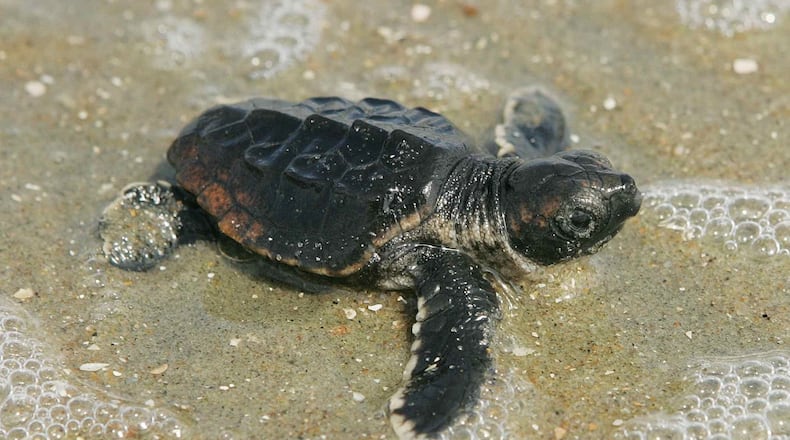It has been a record-shattering year for sea turtle nesting on Georgia’s barrier island beaches — 3,915 nests as of earlier this week, most of them loggerhead turtles, which are protected under the federal Endangered Species Act.
This year’s total smashes the old record of 3,289 nests set in 2016. (Biologists began tracking sea turtle nesting in Georgia in 1989.) North Carolina and South Carolina report similar successes this year.
The record-breaking season, which began in late April, has sparked jubilation among biologists and volunteers in sea turtle restoration programs. They credit the boom to conservation efforts that began more than 30 years ago, including better protection of nests from egg-eating predators and devices on commercial shrimp nets that help turtles escape if accidentally caught in the nets.
Now, with this season’s sea-turtle nesting season (which began in late April) all but over, hatchlings are the focus of attention. Each sea turtle nest contains 100 ping-pong-ball size eggs that hatch about 60 days after laying. That means tens of thousands of half-dollar-size hatchlings can be expected to crawl across Georgia‘s beaches through October.
The tiny turtles hatch in unison, reminiscent of a pot of boiling water. Emerging from their sandy nests, they scurry toward the ocean, guided by the beach’s downward slope and the light of the moon and stars. They must move fast to avoid predators such as sea birds, crabs, raccoons and wild hogs.
Those that make it into the surf immediately start swimming straight out into the Atlantic Ocean. There, they face more hazards such as sharks and entrapment in ocean debris. Researchers believe that most surviving baby turtles spend their early years hiding and growing in huge mats of ocean-floating seaweed called sargassum.
If the turtles survive to adulthood, they can grow to 300 pounds and live for a century. Few, though, survive to adulthood, with estimates ranging from one in 1,000 to one in 10,000.
IN THE SKY: From David Dundee, Tellus Science Museum astronomer: The moon will be new on Friday (Aug. 30). Only two planets are visible right now: Jupiter, in the south around dusk; and Saturn, rising in the east just after dark.
About the Author
Keep Reading
The Latest
Featured


